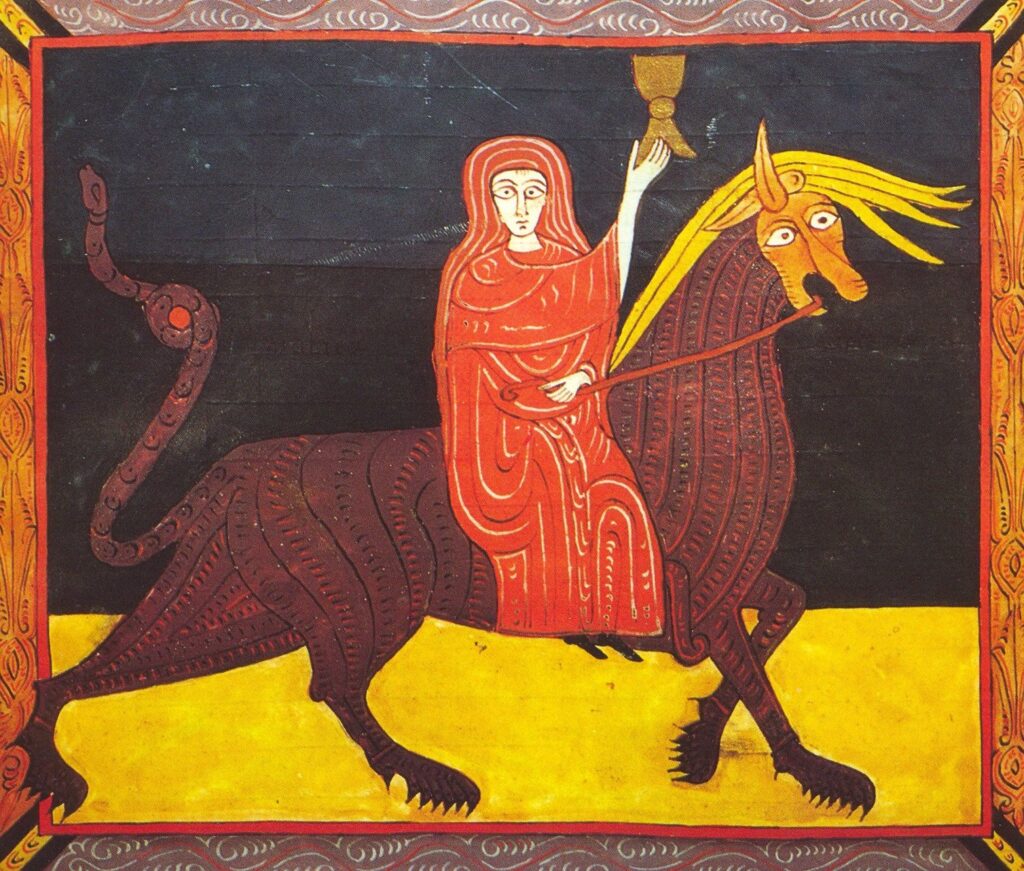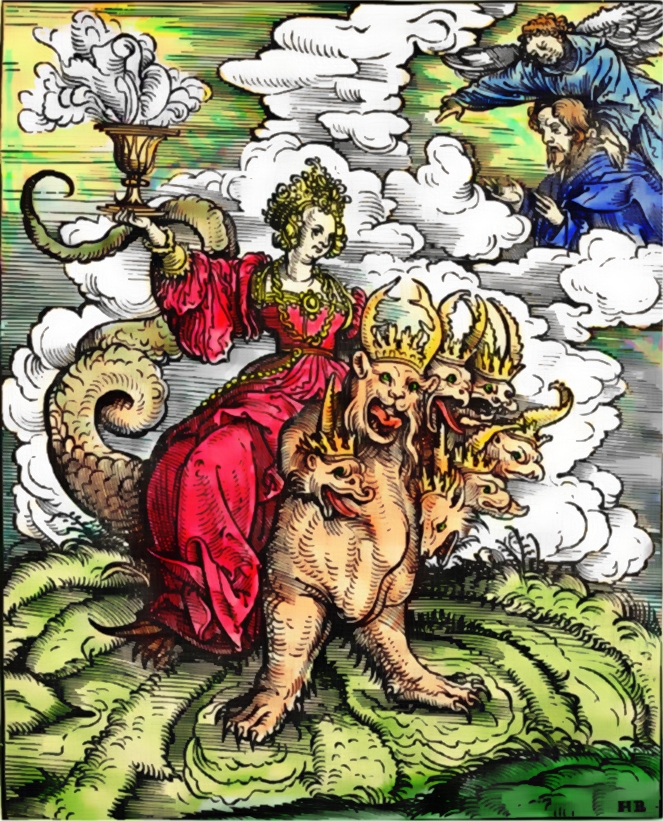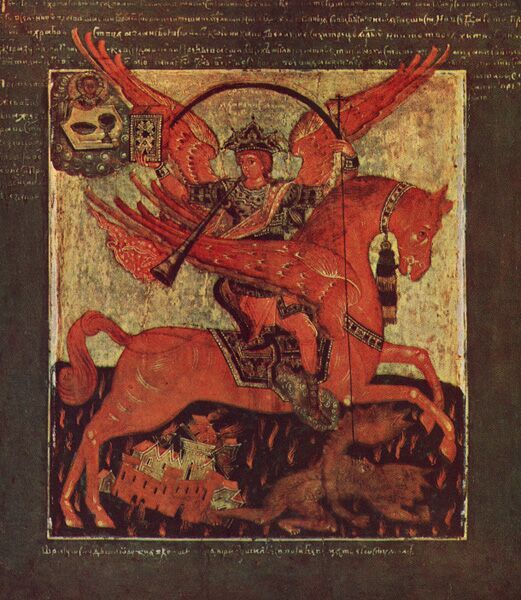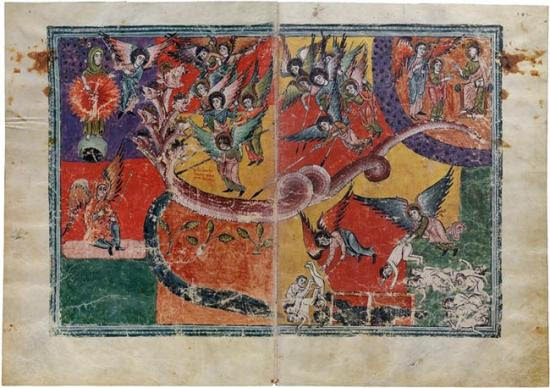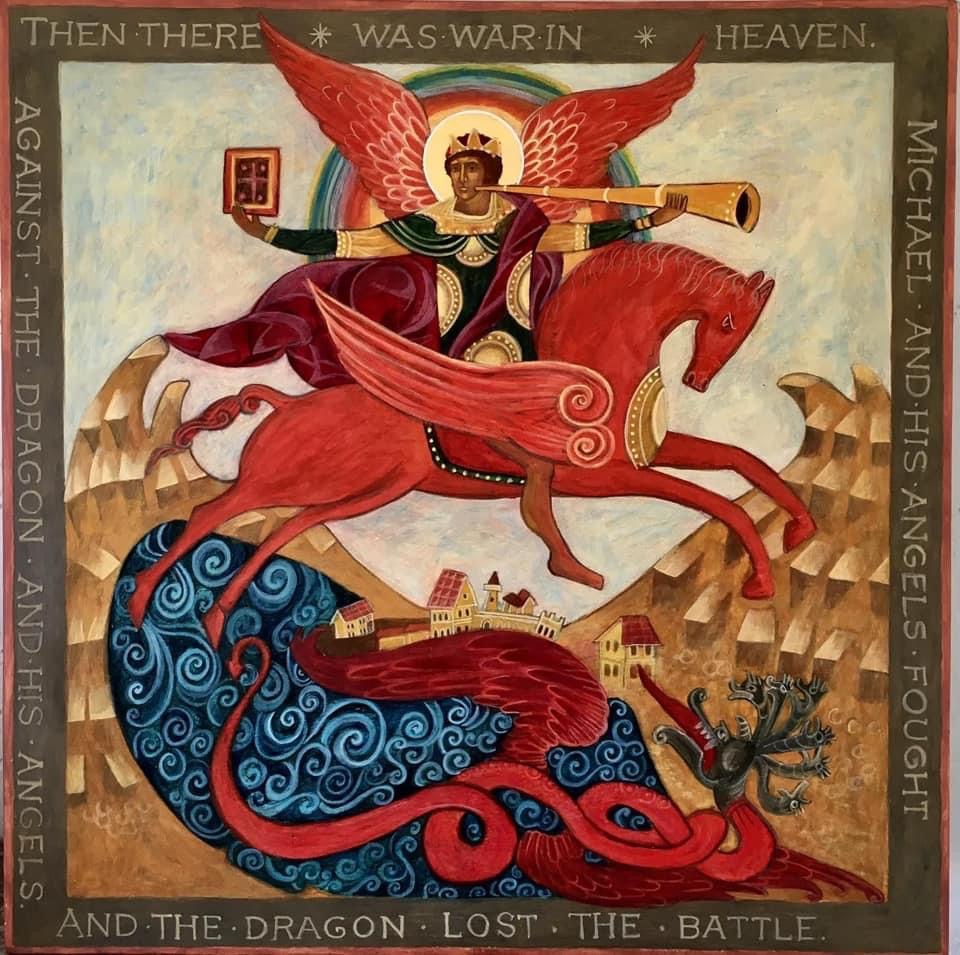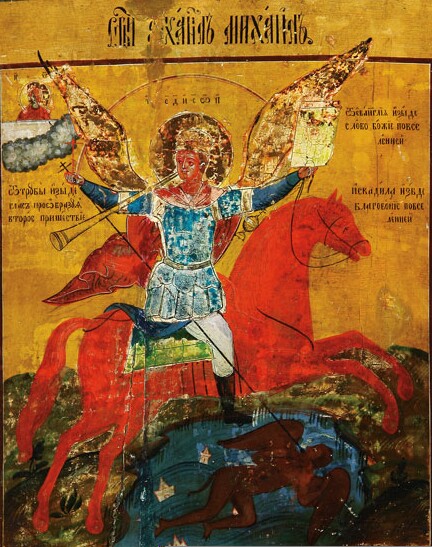I saw a woman mounted on a scarlet beast…. the woman was clothed in purple and scarlet and bedecked with gold and precious stones and pearls. In her hand she held a gold cup full of all obscenities and the filth of her fornication…. I saw the woman was drunk with the blood of God’s people and with the blood of the martyrs of Jesus. (Apoc. 17:3-4, 6)
This woman, the famous “Scarlet Woman” and the “Whore of Babylon,” is the antithesis of the woman clothed with the sun in Apocalypse 12. The woman clothed with the sun gives birth to Christ in her children; the Scarlet Woman is drunk with the blood of those children, now martyred. The woman clothed with the sun is attacked by the dragon, the Antichrist; now the dragon, the Antichrist, escorts the Scarlet Woman in her apparent hour of triumph. The woman clothed with the sun is a mother who remains forever a virgin; the Scarlet Woman is the mother of all abominations and prostitutions imaginable. If the woman clothed with the sun is Sophia, the Divine Wisdom (Proverbs 8-9, Baruch 3-4, Wisdom 6-8), then the Scarlet Woman is the “loose woman” whose house is the gateway to Hell (Proverbs 7, 9).
The icons of Novgorod used scarlet as the background of divine light, out of which the saints stepped to greet the faithful. It is also the color of the Hellmouth, the great beast who devours the damned in icons of the Last Judgement. Scarlet is the presence of God who can be accepted or rejected but never escaped.
The Scarlet Woman is at the moment of decision, capable of giving herself over completely to the destruction of beauty and light or of turning aside from that path of destruction. She can remain the Whore of Babylon or become the Virgin Mother of the faithful, the “holy city, the new Jerusalem, coming down out of heaven from God, prepared as a bride for her husband” (Apoc. 21:2).
(For a fuller discussion of the woman clothed with the sun and the whore of Babylon, see my chapter “Clothed in Scarlet, Clothed with the Sun: Thoughts on the Women of Apocalypse 12 and 17” in Earth’s Abominations: Philosophical Studies of Evil available here.)

